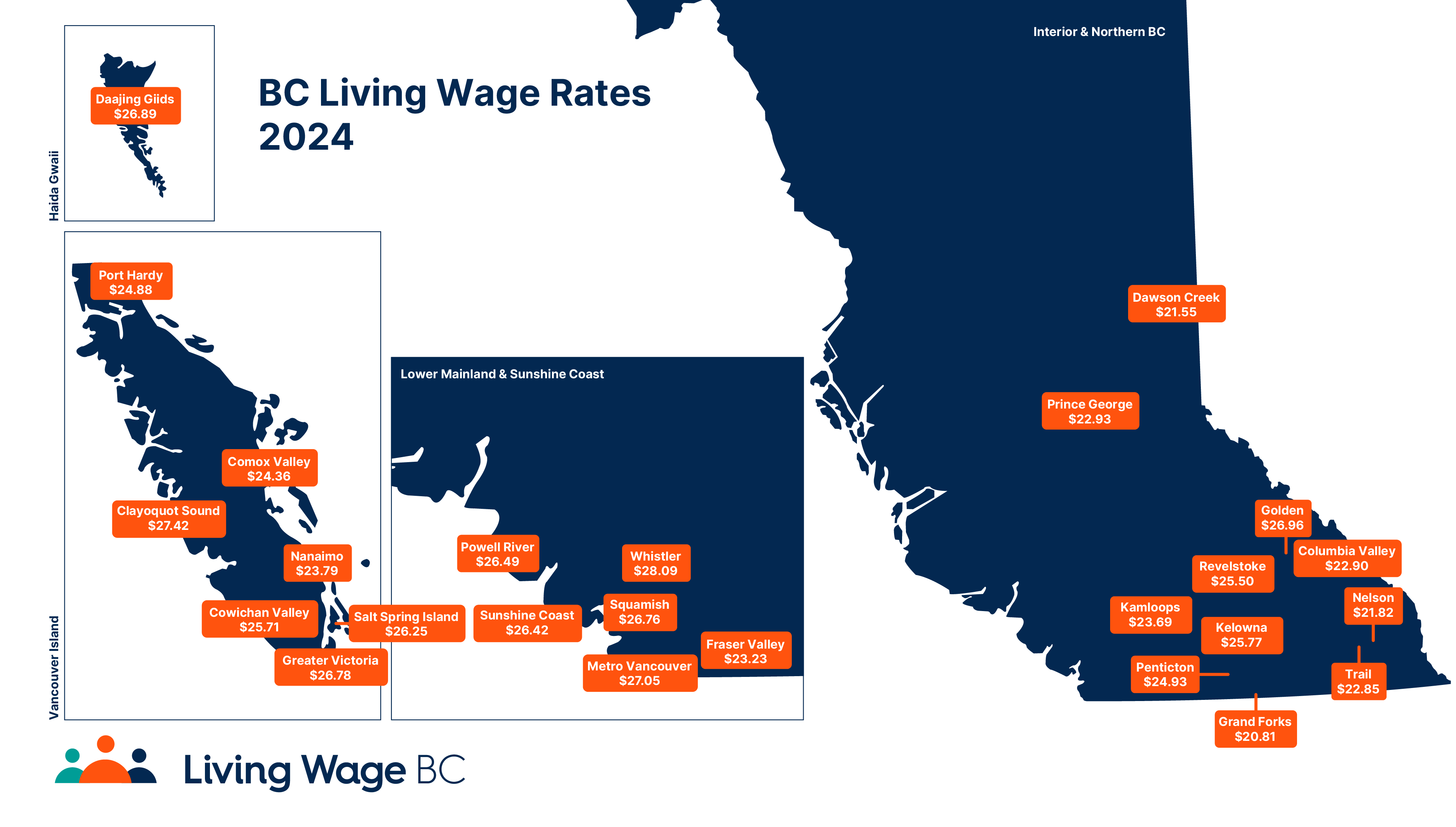
Nanaimo’s living wage sees 4 per cent increase
NANAIMO — It’s a smaller jump than in recent years, but the cost of living still continues to rise on the central Island.
New data from Living Wage BC shows the hourly wage two adults must each earn to support a family of four in Nanaimo is $23.29, a four per cent increase from $22.87 in 2023.
Anastasia French from the organization which tracks costs and wages province-wide, said the hourly amount is just for people to scrape by and cover their basic necessities.
“It is a bare-bones budget, it doesn’t include things like paying off debt, savings for retirement or paying for Taylor Swift tickets or any luxuries like that. Everywhere across British Columbia, the living wage has continued to go up because the cost of housing and food continues to increase.”




